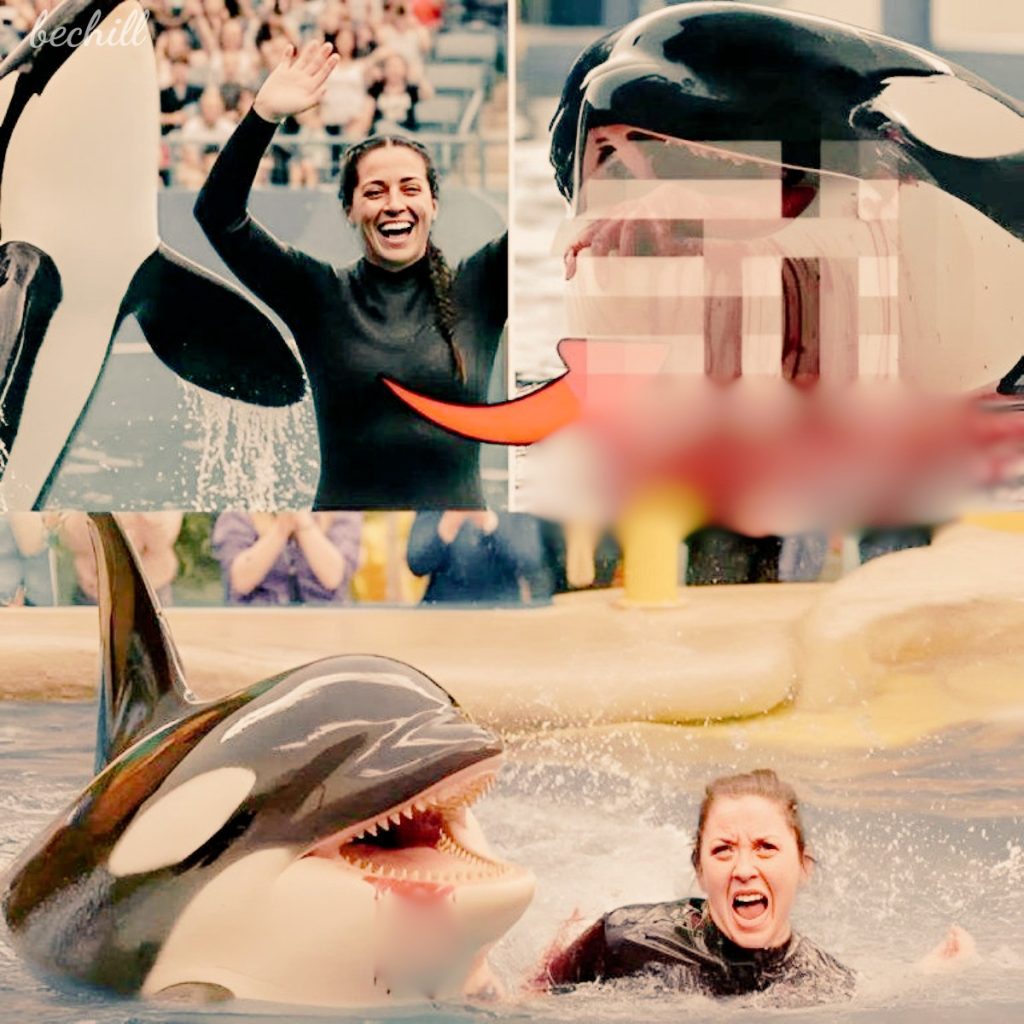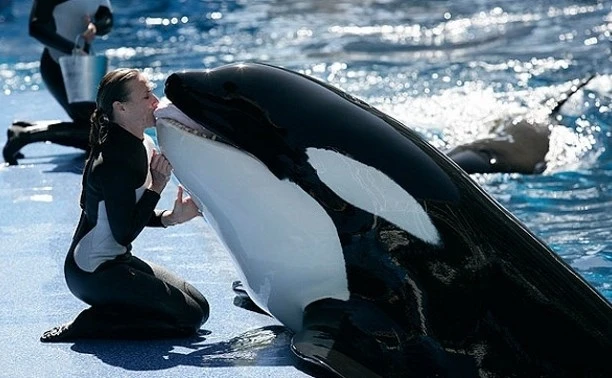
On a sunny afternoon in July 2025, Pacific Blue Ocean Park in San Diego buzzed with excitement as families and tourists filled the stands for the daily orca show, a highlight of the park’s offerings. Jessica Radcliffe, a seasoned trainer with over a decade of experience, stood at the edge of the performance pool, her bright smile and enthusiastic wave eliciting cheers from the crowd. Known for her deep bond with the park’s killer whales, particularly a 22-year-old male orca named Koa, Radcliffe was a beloved figure, often praised for her expertise and charisma. But in a fleeting moment, captured in a viral video that would haunt social media platforms like X, the scene turned from joy to horror. Without warning, Koa surged from the water, his massive body twisting violently, and struck Radcliffe, sending her into the pool. The arena fell silent—no screams, no gasps, just the chilling sound of water splashing against the tank’s walls as breathless terror gripped the spectators.
The incident unfolded during a routine segment of the show, where Radcliffe was guiding Koa through a series of jumps and spins. The crowd, packed with children waving glow sticks and parents recording on their phones, watched in awe as the 6,000-pound orca glided gracefully through the water. Radcliffe’s confidence was palpable; her years of training had built a rapport with Koa that seemed unshakable. But as she signaled for a final leap, something went horribly wrong. Witnesses later described Koa’s behavior as erratic in the moments leading up to the attack, with subtle signs—faster breathing, a flick of his tail—that went unnoticed by all but the most seasoned trainers. In a split second, Koa lunged, his open jaws grazing Radcliffe’s side before his bulk knocked her into the water. The viral clip, shared millions of times on X, captured the horrifying moment: Radcliffe’s body disappearing beneath the surface as the water churned, and the crowd’s cheers dissolved into stunned silence.
Trainers and park staff reacted swiftly, sounding alarms and ushering spectators out of the arena. Two colleagues dove into the pool, risking their own safety to retrieve Radcliffe, who was pulled out unconscious and bleeding from a severe gash on her torso. Paramedics rushed her to a nearby hospital, where she was listed in critical condition with multiple fractures and internal injuries. Pacific Blue Ocean Park issued a statement calling the incident a “tragic accident,” emphasizing Radcliffe’s expertise and the park’s commitment to safety. They suspended all orca shows indefinitely and placed Koa in isolation for behavioral assessment. However, the statement did little to quell the public’s outrage, as the viral video fueled debates about the ethics of keeping killer whales in captivity and the inherent dangers of human-orca interactions.
The incident reignited long-standing criticism of marine parks, with animal welfare groups like PETA and the Whale Sanctuary Project seizing the moment to condemn the industry. “Killer whales are apex predators with complex social and emotional needs that cannot be met in captivity,” said marine biologist Dr. Lori Marino in a widely shared X post. She pointed to Koa’s history, noting that the orca had shown signs of stress, including repetitive behaviors, in recent years. The 2013 documentary Blackfish, which exposed the psychological toll of captivity on orcas, resurfaced in public discourse, with comparisons drawn to the 2010 death of trainer Dawn Brancheau at SeaWorld. Critics argued that Radcliffe’s incident was not an isolated event but part of a pattern of aggression linked to the unnatural conditions of confinement, where orcas are kept in small tanks and separated from their natural pods.
Social media amplified the tragedy’s impact, with the hashtag #FreeKoa trending alongside calls to boycott Pacific Blue Ocean Park. Users shared clips of Radcliffe’s final wave, juxtaposed with the horrifying attack, sparking emotional responses ranging from grief to anger. “She was smiling one second, and then… that sound of the water. I can’t unhear it,” one X user wrote. Others criticized the park’s safety protocols, pointing to a 2023 USDA report that flagged inadequate tank maintenance and insufficient trainer training at the facility. Radcliffe’s supporters, however, defended her legacy, emphasizing her dedication to marine life and her advocacy for better care standards within the industry. A GoFundMe page for her medical expenses raised over $200,000 in 48 hours, reflecting the public’s admiration for her work.
The incident also raised questions about the risks trainers face. Radcliffe, like many in her profession, had signed waivers acknowledging the dangers of working with orcas, but the viral video underscored the unpredictability of such animals. Former trainer John Hargrove, who left SeaWorld after years of working with orcas, told CNN that even the most experienced trainers can misread subtle behavioral cues. “Orcas are not domesticated; they’re wild animals under immense stress,” he said. Hargrove noted that Koa’s attack might have been triggered by a minor disruption—a sound, a gesture, or even an off day for the orca—highlighting the precarious balance of trust in these interactions.
As Radcliffe fought for recovery, the incident became a turning point in the debate over captive orcas. California lawmakers, already pushing for stricter regulations on marine parks, called for an investigation into Pacific Blue Ocean Park’s practices. Advocacy groups urged the park to retire Koa to a seaside sanctuary, where he could live out his days in a more natural environment. The park, facing mounting pressure, announced plans to review its orca program but stopped short of committing to phase it out. Meanwhile, the viral video continued to circulate, its haunting imagery—the cheerful wave, the sudden violence, the cold water—searing itself into the public’s consciousness.

For those in the arena that day, the silence that followed the attack was deafening, a stark contrast to the cheers moments before. The incident shattered the illusion of harmony between humans and orcas, exposing the raw power and unpredictability of these creatures. As Radcliffe’s story unfolded, it became a symbol of the broader cost of captivity, not just for the animals but for the humans who dedicate their lives to them. The breathless terror of that moment, captured forever in a viral clip, served as a chilling reminder that in the world of marine parks, joy can turn to horror in an instant, leaving an indelible mark on all who witness it.